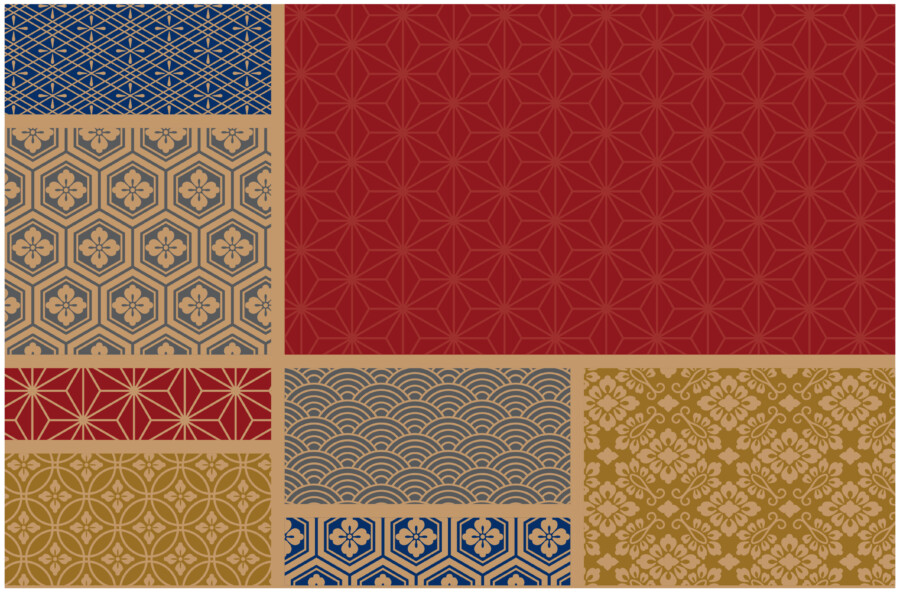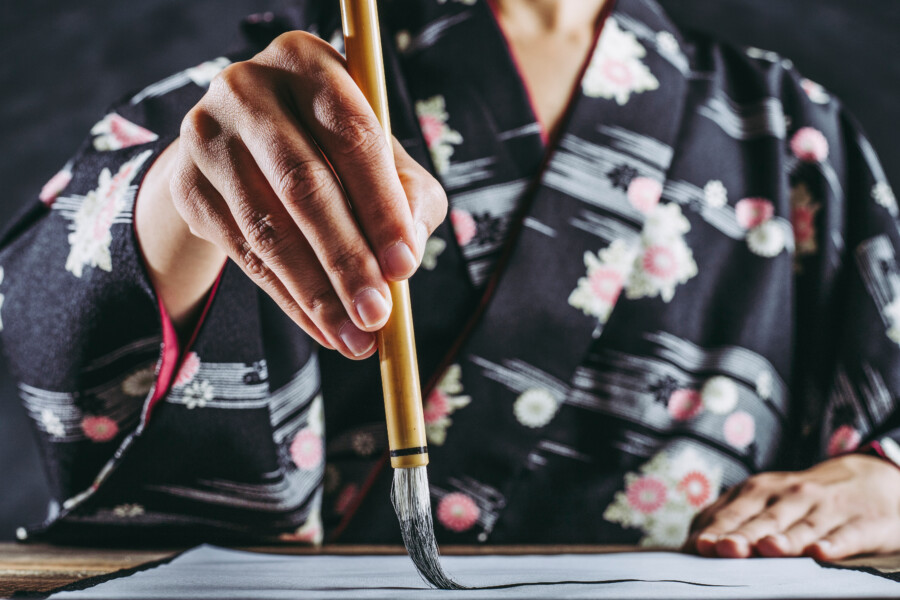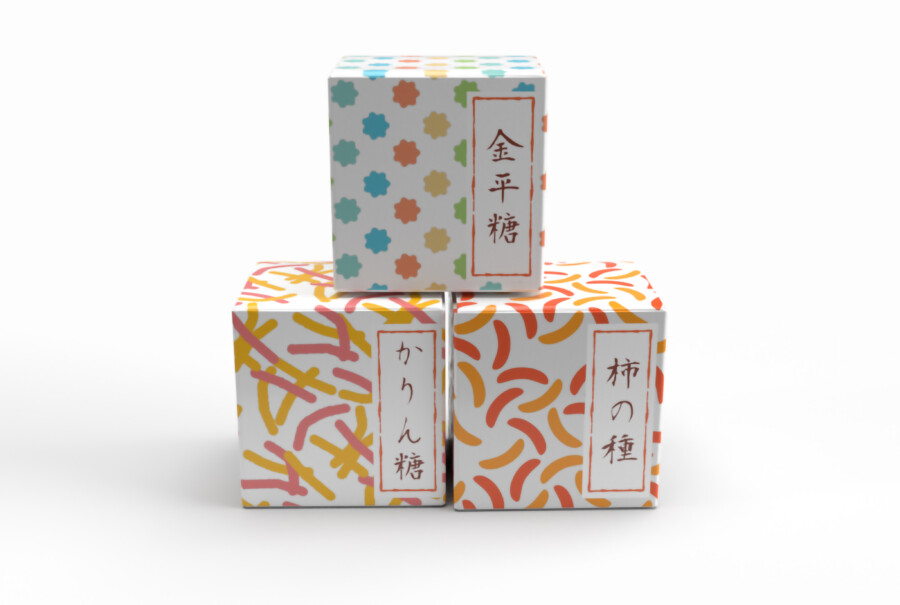
Tips for Creating Original Japanese-Style Logos
Japanese-style logos that blend traditional Japanese aesthetics with modern design sensibilities have gained high acclaim both in Japan and internationally. However, creating a truly original Japanese-style logo, rather than a stereotypical “wa-fu” (Japanese-style) design, requires deep insight and creativity. This article will detail specific approaches and elements to consider in the design process for creating unique Japanese-style logos.
Professional Japan-Ready Packaging
Understanding Traditional Japanese Elements
Know Japanese Color Palettes
Traditional Japanese colors carry deep meanings born from nature and culture throughout the seasons. For example, “koubai-iro” (red plum color) evokes early spring plum blossoms, while “asagi-iro” (light blue) suggests early summer young leaves. Understanding and appropriately using these colors can add Japanese essence and seasonal nuances to your logo.
Specific Approaches:
- Create a color palette encompassing traditional Japanese colors
- Organize the meanings and seasonal associations of colors, comparing them with your brand concept
- Experiment with unique color combinations using multiple traditional colors
Study Traditional Patterns
Japan has numerous traditional patterns such as asanoha (hemp leaf), shippou (seven treasures), and seigaiha (blue ocean waves). These patterns are not mere decorations; each carries its own meaning and story. Learning the history and symbolism of these patterns can add depth to your logo design.
Specific Approaches:
- Collect and digitize traditional Japanese patterns
- Research the meanings and origins of patterns, selecting those that align with your brand values
- Modernize chosen patterns, elevating them into simple yet impactful design elements
Leveraging Calligraphy and Japanese Character Culture
Bring Out the Charm of Brush Calligraphy
Japanese calligraphy is an art form where each stroke embodies the artist’s spirit. Incorporating brush calligraphy into your logo can avoid a mechanical impression and express warmth and individuality.
Specific Approaches:
- Collaborate with a professional calligrapher to write your brand name or key phrases
- Digitize the written characters, making subtle adjustments as needed
- Carefully consider the balance between brush calligraphy and other design elements
Explore Japanese Typography
Go beyond common Japanese fonts like Mincho or Gothic, and explore typography that reflects the richness of Japanese character culture to create logos with unique personalities.
Specific Approaches:
- Study character designs from classical Japanese books and woodblock prints
- Draw inspiration from works of contemporary Japanese font designers
- Develop original character designs based on existing fonts
Modern Interpretation of Japanese Aesthetics
Incorporate the Concept of “Yohaku” (Blank Space)
The concept of “yohaku” in Japanese art is not mere empty space, but an important element that stimulates the viewer’s imagination. Incorporating this idea into logo design allows for simple yet profound expressions.
Specific Approaches:
- Create appropriate blank spaces between logo elements
- Use blank space to give the logo “ma” (interval) or “breathing room”
- Create prototypes with different expressions like black and white inversions or line drawings to verify the effect of blank space
Modernize the Aesthetics of “Wabi-Sabi”
Japanese aesthetics represented by “wabi-sabi” find deep beauty in simplicity and lack of ostentation. Aim for minimal yet impactful logo designs by interpreting this concept in a modern context.
Specific Approaches:
- Strip away unnecessary decorations, leaving only essential elements
- Consider designs that anticipate material textures and aging
- Scrutinize designs in monochrome or grayscale, pursuing strength that doesn’t rely on color
Drawing Inspiration from Traditional Japanese Craft Techniques
Recreate Decorative Techniques like Gold Leaf and Lacquer
Decorative techniques used in traditional Japanese crafts, such as gold leaf and lacquer, can be applied to modern graphic design. By digitally recreating these techniques, you can create logos that combine luxury with traditional flavor.
Specific Approaches:
- Research techniques for digitally expressing the textures of gold leaf and lacquer
- Aim for a three-dimensional finish by skillfully using gradients and light reflections
- Incorporate only parts of traditional techniques, fusing them with modern designs
Utilize Characteristics of Traditional Tools and Materials
Understanding the characteristics of traditional Japanese tools and materials like brushes, washi paper, and stamps, and reflecting them in digital design can create logos with unique textures and feels.
Specific Approaches:
- Create samples using actual tools and materials to observe their characteristics
- Use digital brushes and texture effects to recreate the feel of traditional materials
- Explore new expression methods combining traditional techniques with modern digital technology
Balancing Brand Individuality with Japanese Essence
Weave Japanese Elements into the Brand Story
Rather than simply using Japanese design elements, create deeper logo designs by connecting the brand’s history and philosophy with Japanese culture and traditions.
Specific Approaches:
- Deeply understand the brand’s origins and philosophy, and find Japanese cultural elements that match
- Construct a story that links the brand’s characteristics with traditional Japanese values
- Develop symbols and motifs that visually express this story
Maintain a Global Perspective
While pursuing Japanese-style design, it’s important to create designs that work in international markets. Aim for logos with universal appeal while being mindful of cultural sensitivities.
Specific Approaches:
- Research which Japanese elements are attractive to people overseas
- Avoid symbols or color usage that might lead to cultural misunderstandings
- Consider the possibility of bilingual logos in Japanese and English (or other languages)
Conclusion
The process of creating an original Japanese-style logo is a creative journey that fuses deep understanding of traditional Japanese culture with modern design techniques. Use the approaches and elements to consider introduced in this article as reference to create logo designs that beautifully harmonize brand individuality with Japanese essence.
Lastly, it’s crucial to remember that excellent logo design not only looks beautiful but also eloquently tells the essence of the brand. While incorporating Japanese aesthetics and cultural elements, pursuing designs that remain true to the brand’s core will be the key to creating truly original Japanese-style logos.












